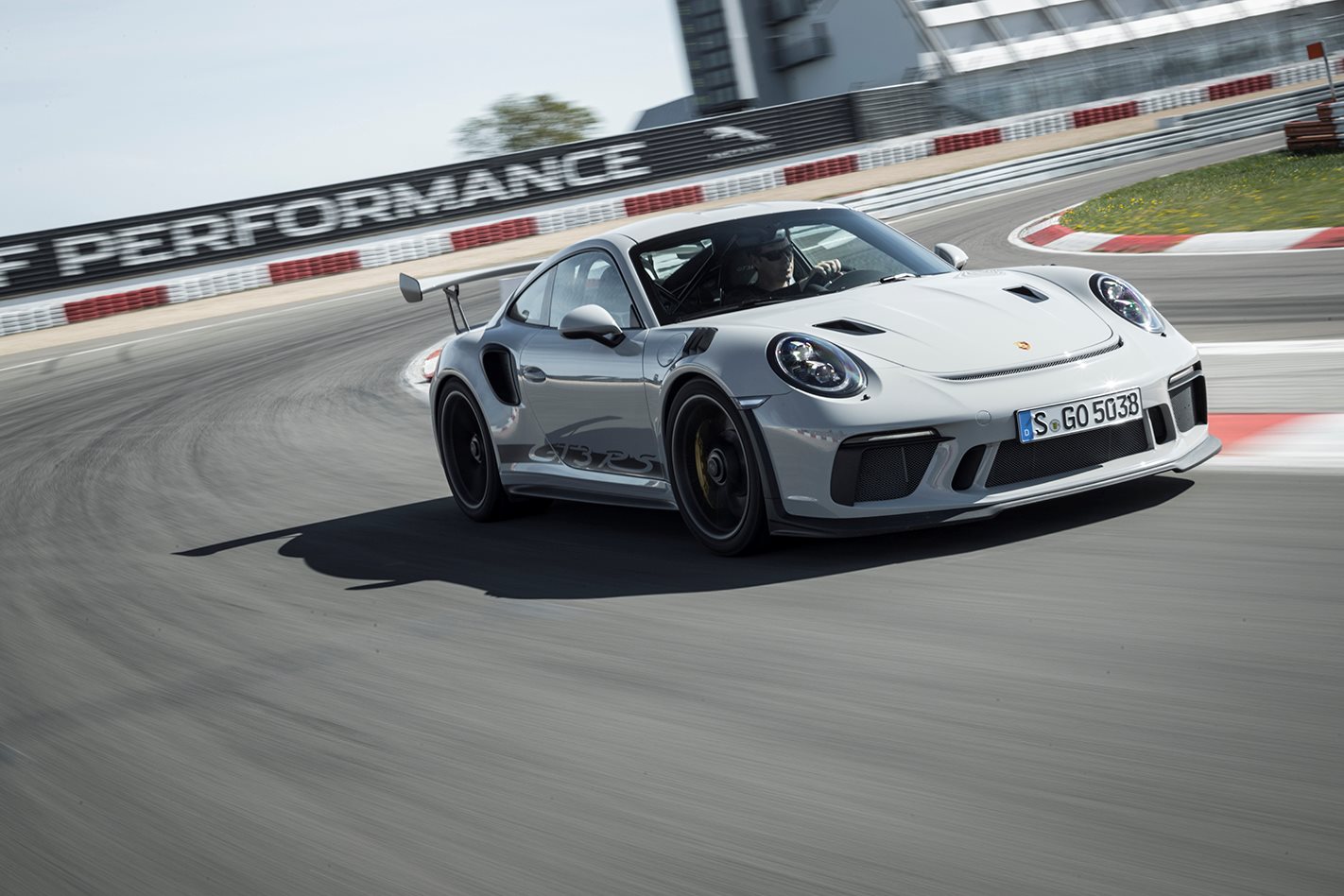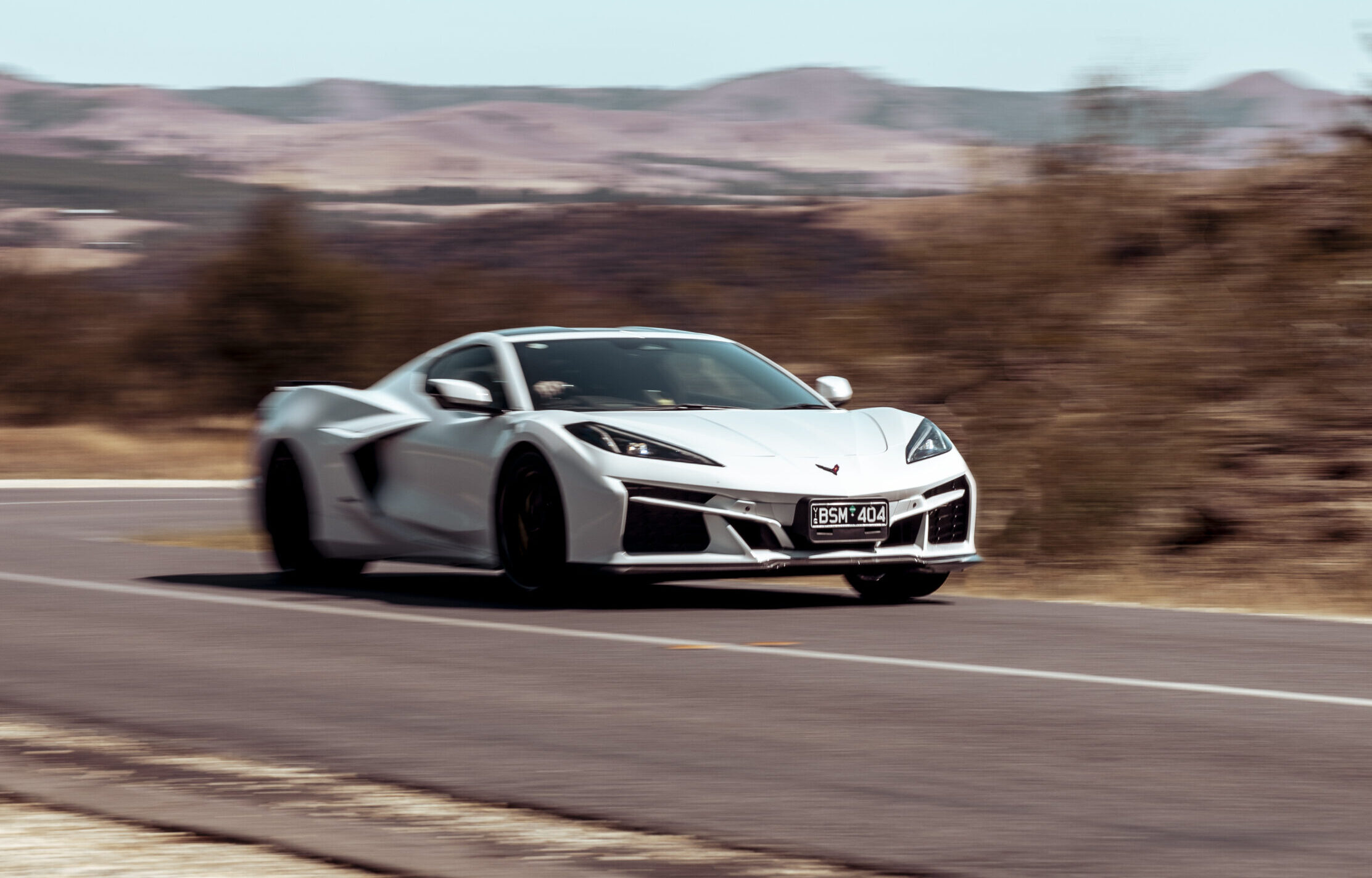WHAT IS IT?
The ultimate incarnation of the naturally-aspirated Porsche 911. The circuit-oriented GT3 RS marks the last hurrah for the 991-generation of the 911.
WHY WE’RE TESTING IT
When Porsche asks if you’d like to drive their new 911 GT3 RS at the Nurburgring, it’s unlikely you’re going to say no. Okay, so it was the GP circuit rather than the Nordschleife, but we’re not complaining.
MAIN RIVALS
High-end track specials like the Ferrari 488 Pista and the Lamborghini Huracan Performante might also make a compelling claim on your dollar.
THE WHEELS VERDICT
The GT3 RS has long represented Porsche at its very best. Shorn of the compromises imposed on its humbler road cars, the RennSport cars showcased Weissach’s competition savvy in a road legal package, perfect for soaking up trackday punishment. This latest 991.2 generation car is an evolutionary version of that which preceded it, but the incremental changes have added up to a major improvement. If you’ve ever wondered what it’s like to drive a GT3 Cup racer, you’re going to get a pretty good idea of it in the spectacularly capable GT3 RS. It’s a masterpiece.
PLUS: Rabid engine; transmission; chassis; brakes; electronic control systems; clever aero MINUS: Availability not straightforward; extras ramp the price up sharply; no manual option
THE WHEELS REVIEW
I’M REALLY not sure where to go with this one. To give you the full breakdown on what Porsche has done to improve the latest 911 GT3 RS requires a cool head, a slightly nerdy affinity for historical detail and the analytical focus of an engineer. The trouble is, I’ve just been poured out of the car after a series of laps of the Nurburgring’s GP circuit, a sweaty, gibbering wreck. This 383kW berserker will do that to you. Time for a sit down and a few minutes to decompress.

The car claimed a 284kW parity with the GT3 for expedient homologation reasons, but Preuninger later admitted that no car left Weissach with less than 298kw (400hp). This was followed in 2006 by the 309kW 997 GT3 RS, also powered by a 3.6-litre engine. That 997.1 version was updated to 3.8-litre, 336kW 997.2 guise in 2009, with the engine being further increased in 2011 for the sublime 373kW 911 GT3 RS 4.0, that car marking the last hurrah for the 997 generation and the final bow for the iconic Mezger engine.
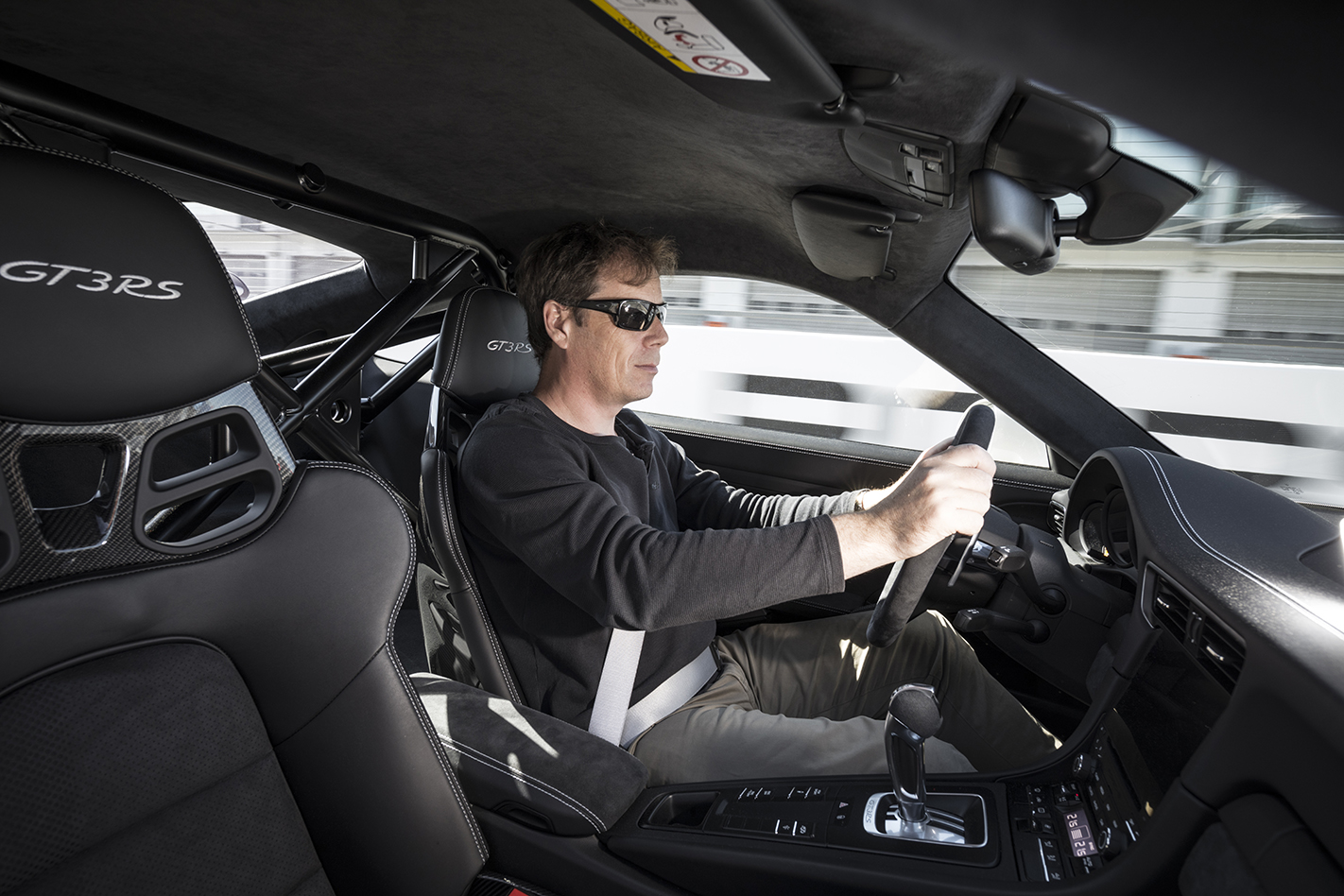

None of which explains the fact that in the 12 years between the introduction of the 996 GT3 RS and the 991 version, the Nurburgring lap times improved by 26 seconds. Yet this car carves a massive 24 second chunk off its predecessor’s lap of the Green Hell, recording a faintly gobsmacking 6min 56.4sec mark.
Granted, you probably don’t have the skills of Porsche factory driver Kevin Estre so therefore this might seem a bit academic. I know I don’t have anything like that sort of pedalling talent, but knowing there’s the capability beneath you is somehow reassuring.

What you do notice is the immediacy of the car’s front end, the way it translates steering effort into lateral grip at the front tyres. That old GT3 RS trait of easing the front end into a corner to feel out its purchase and then having accomplished that, set to work managing the rear grip post-apex is a thing of the past. This 991.2 feels all of a piece, with far sharper turn-in and superior ultimate grip allowing you to pick up the throttle earlier and harder.
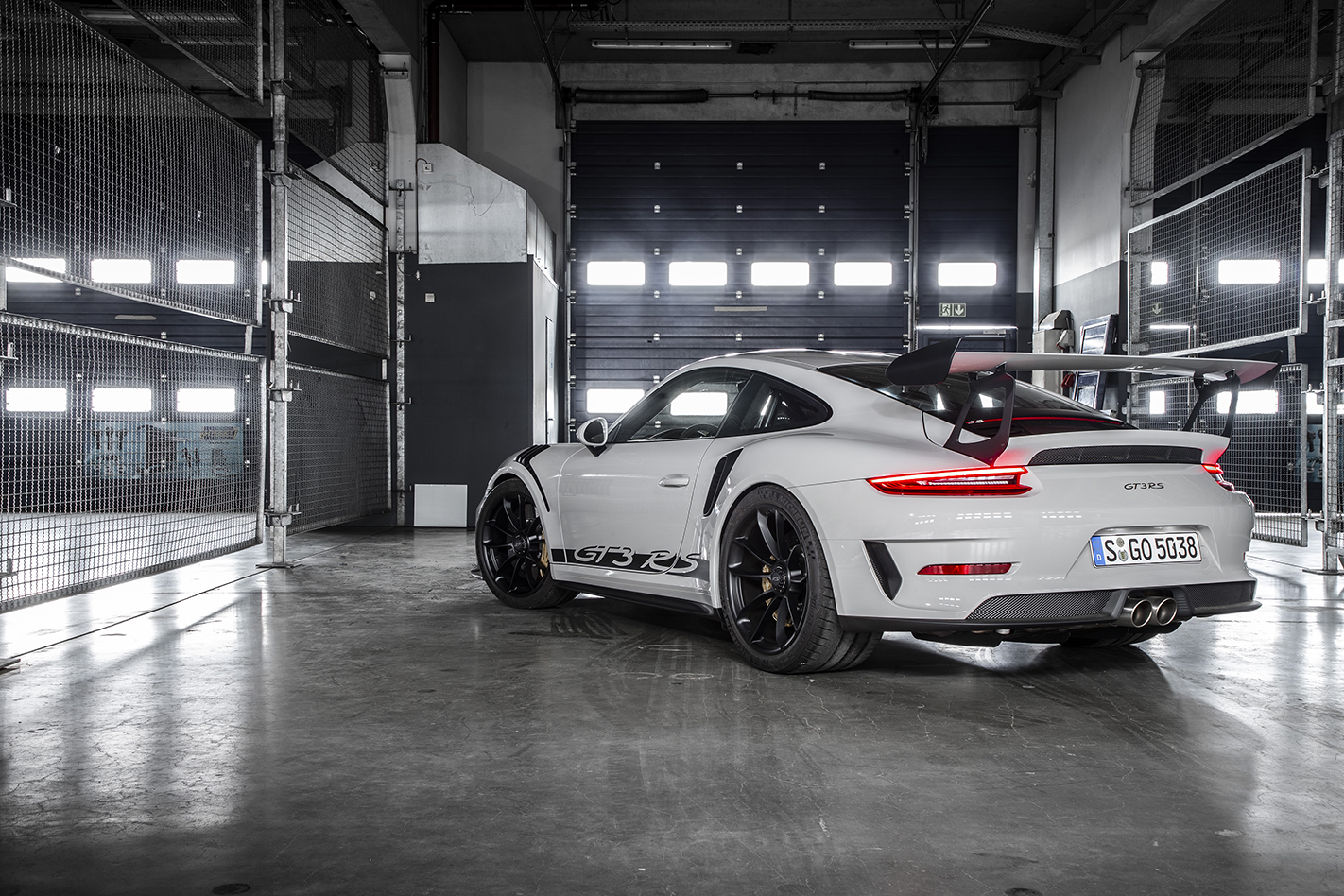

Crank the manually-adjustable rear wing to its most aggressive setting and the 991.2 delivers 40 percent more downforce than its predecessor. That’s a massive step change in high-speed grip and a lot of work has also been devoted to making the car stable and aerodynamically effective during high-speed braking.
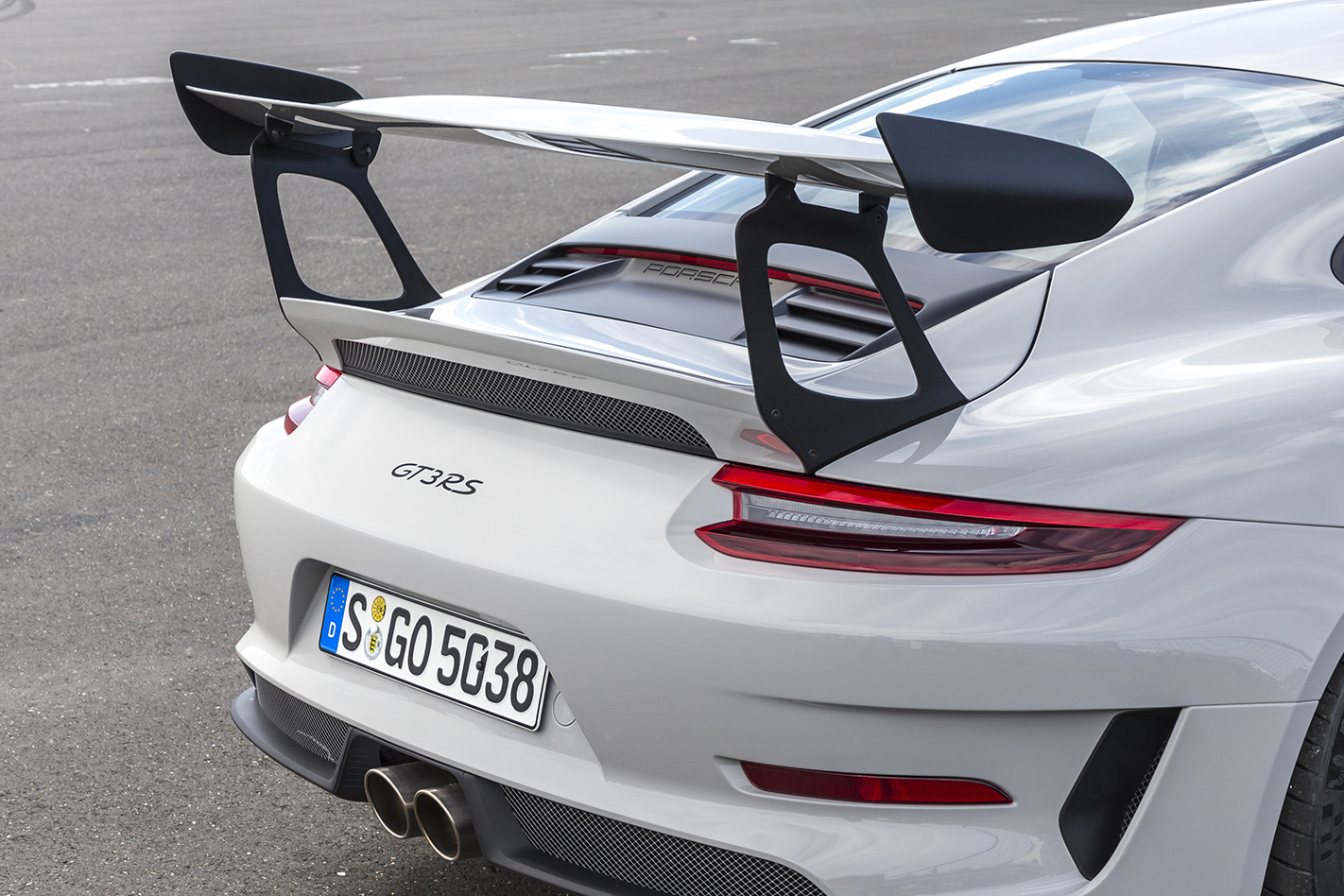
Brake cooling is handled by those NACA ducts punched into the bonnet, which create tumbling air vortices that draw fast-moving air into the scoops, overcoming a problem of early recessed scoop designs where they could only draw in relatively slow-moving boundary layer air.
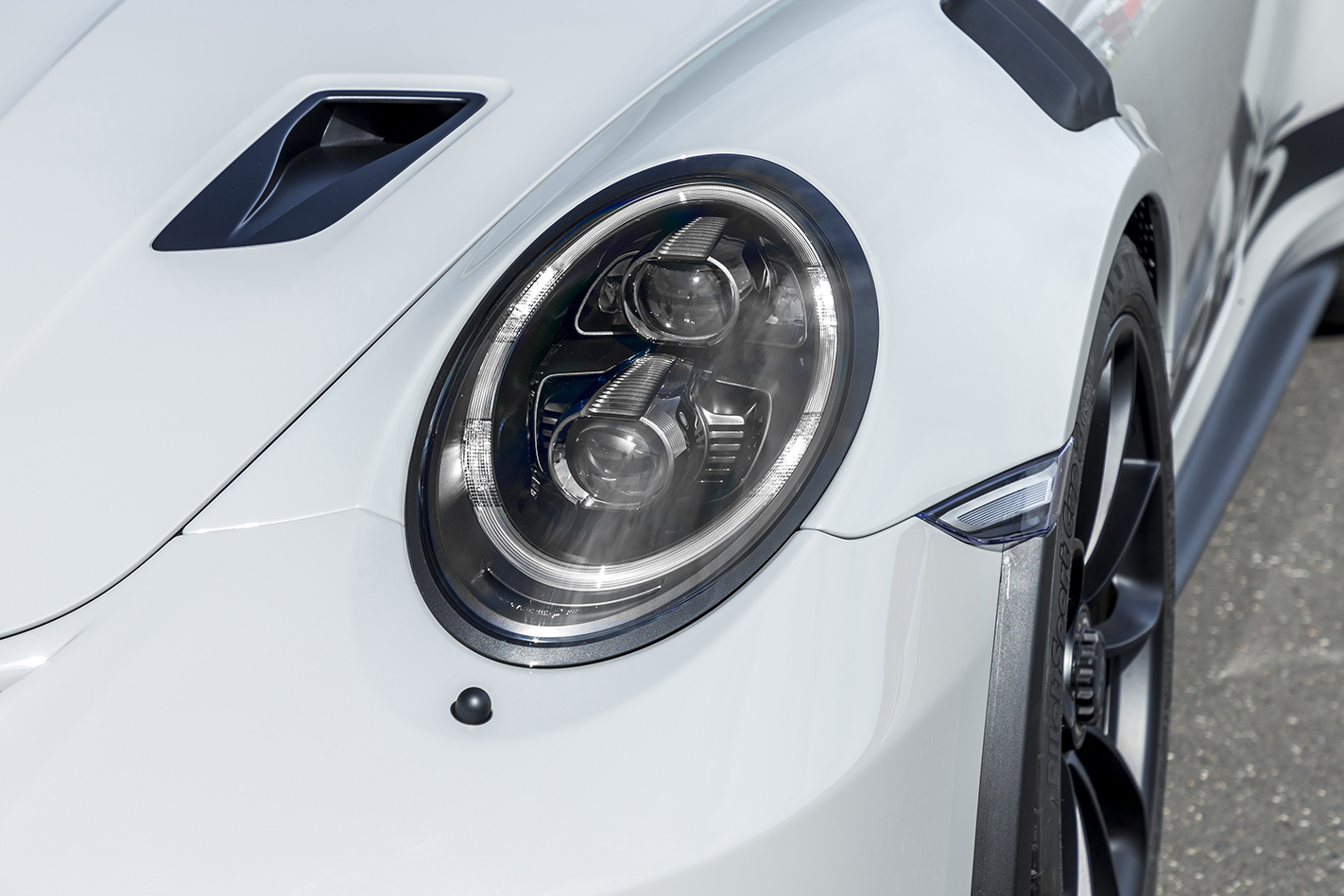
The integrated rear spoiler does most of the aerodynamic donkey work at the back, kicking inefficient vortices way behind the car, while the rear wing can be adjusted through four steps of -1, +1, +3 and +5. The underbody diffusers help reduce body pitch at speed, improving stability under braking.
As you’d expect, all of the electronic systems that control the four-wheel steering, the stability control, transmission logic and the torque vectoring have been recalibrated and optimised to accommodate the additional effects of the improved aero package.
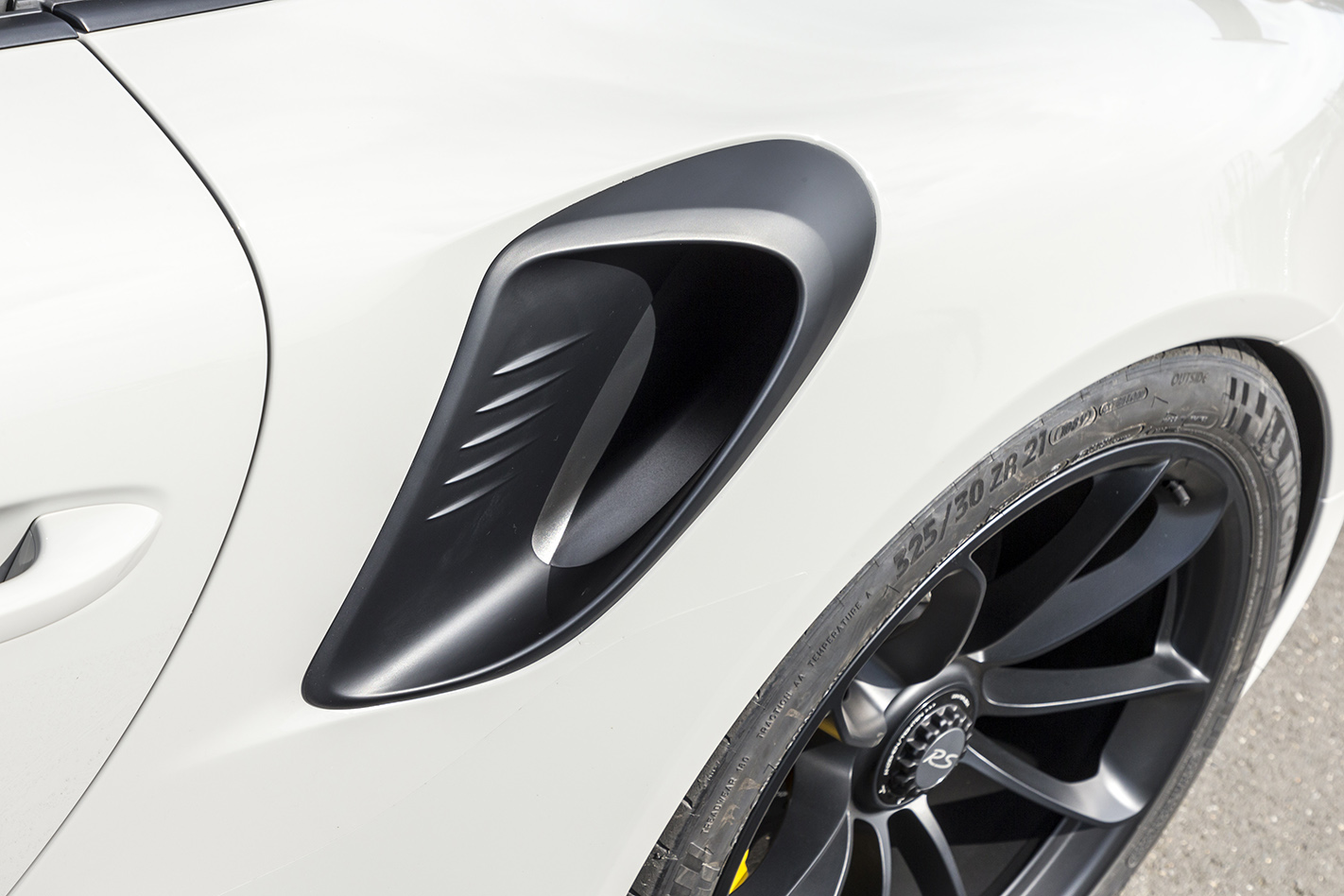
In case you really wanted to pare weight out of the car, the optional $34,390 Weissach pack saves 16.5kg and swaps the magnesium roof panel for a carbon fibre reinforced plastic (CFRP) item, while the bonnet is also CFRP, as are the front and rear anti-roll bars and coupling rods. Rear wing and mirror shells and six-point racing harnesses are also included, but the forged magnesium alloy wheels (which save another 11.5kg) are an extra expense and are only available from February 2019.
Throw another $7600 Porsche’s way and they’ll take further weight out of it by swapping out the no-cost option steel roll cage for a titanium item. Or you could tack $21,590 to the bill and get the car with Porsche Carbon Composite Brakes, which are 50 percent lighter than their steel equivalents.
In July, an even grippier Michelin Pilot Sport Cup R tyre will be made available as an option. As you might well have figured out by now, there probably won’t be any Aussie GT3 RS cars leaving the Porsche dealers at the flat $416,500 price before on-roads.

Production will continue for another 12 months before this generation car is superseded by a new model and the local importers are keen to land additional allocation, but it’s by no means guaranteed.
Yes, it’s an evolutionary model but, as we’ve seen, evolution sometimes takes rapid leaps forward. It’s the product of incremental gains or, as Andreas Preuninger says, “11,000 parts made to feel like one.” If you’re one of the lucky few to get a slot, you’ll have landed possibly the finest sports car for sale at any price.
SPECS
Model: Porsche 911 GT3 RS (991.2) Engine: 3996cc flat 6, dohc, 24v Max power: 383kW @ 8250rpm Max torque: 470Nm @ 6000rpm Transmission: 7-speed dual-clutch Weight: 1430kg 0-100km/h: 3.2 sec Economy: 12.8L/100km Price: $416,500 On sale: Now, first deliveries Q4 2018


